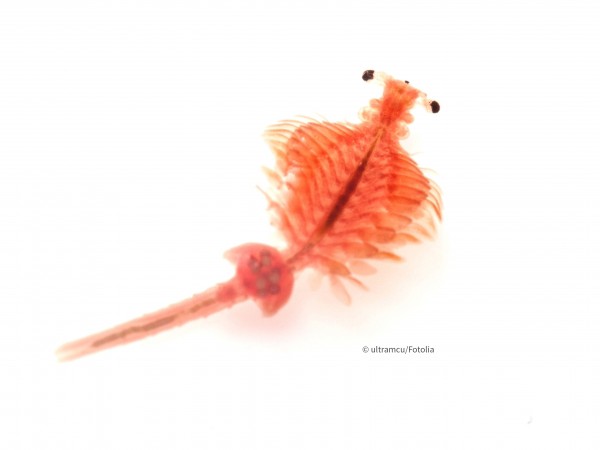

Below we have prepared a hatching protocol which has been been proven to be successful and reliable, based on our many years of experience in marine aquaculture. In addition, this protocol refers to the findings of Lavens & Sorgeloos 1996.
Hatching Guide Artemia
1. Prepare saltwater
Incubate Artemia eggs in freshly prepared saltwater. The water should be pre-sterilized and contain 15 – 30 g/l salt. The best way to prepare the solution is by using boiled tap water or reverse osmosis water and salt. Please use custom Artemia salt made by specialists. Alternatively you can also try using common salt. Certain sea salt mixtures from specialist retailers, no matter how expensive, may contain traces of heavy metals and severely damage the hatching results.
2. Hatching container and aeration
The hatching container should be a cylindrical tank with a conical bottom. Air lines are placed at the end of the lower cone resp. at the tank’s center. The lines should have a diameter of 6 – 8 mm and aerate intensely with coarse bubbles. It’s crucial that the Artemia eggs remain homogeneously mixed and are not able to sediment anywhere, otherwise the hatching rate will be reduced significantly. Oxygen level should be at 5 mg/l and never drop below 2 mg/l. Producing fine bubbles by using wooden air stones results in skimming the eggs and discharging freshly hatched nauplii. Make sure not to use any parts made of aluminium in your culture. Combined with sea water they are toxic to Artemia.
3. Dosing the eggs
With high-quality eggs (hatch-out yield >200.000 nauplii/gram), it is sufficient to dose 1 gram of eggs per liter. For eggs of medium quality a dosage of 2.5 g/l is acceptable. This dosage should not be exceeded, otherwise the oxygen level might drop very quickly.
4. Temperature
For most species of Artemia a hatching temperature of 25-28 °C is ideal. Below 25 °C the hatching rate is significantly slowed down, above 33 °C the nauplii are killed while hatching.
5. pH
pH should ideally be 8-8.3. Freshly prepared sea water with 30 g/l is usually at pH 8.2. Sodium hydrogen carbonate (also known as sodium bicarbonate) can be added to readjust or stabilize the pH. However, a dosage of 1 g/l should not be exceeded.
6. Lighting
To induce the hatching process it is crucial that the container is as well-lit as possible. We recommend an illuminance of 2000 lux at the water surface.
7. Incubation length
Most nauplii hatch 24-32 hours after incubation. The amount of time until the first nauplii hatch out depends on lighting, temperature and Artemia species.
8. Feeding
Freshly hatched nauplii should be fed as quickly as possibly or kept cool at 10 °C. After 24 hours at 25 °C, the nauplii have already lost most of their nutritional value. Alternatively, the nauplii can be enriched with microalgae, to enhance the nutritional value and the essential omega-3-fatty acid content.
Sources
Lavens, P. & Sorgeloos, P. (1996) Manual on the Production and Use of Live Food for Aquaculture. FAO Technical Paper No.361. Food and Agriculture Organization of the United Nations, Rome.



